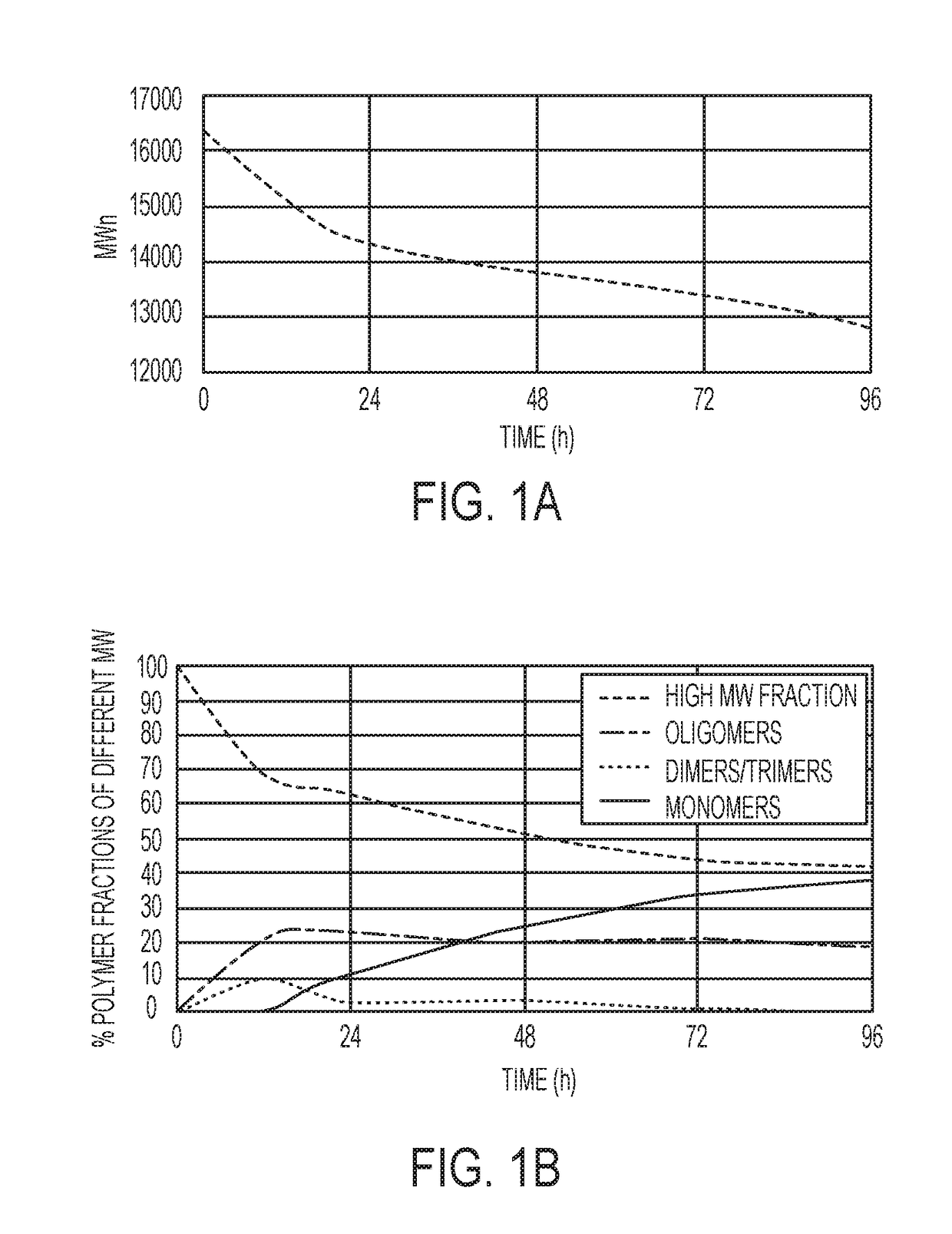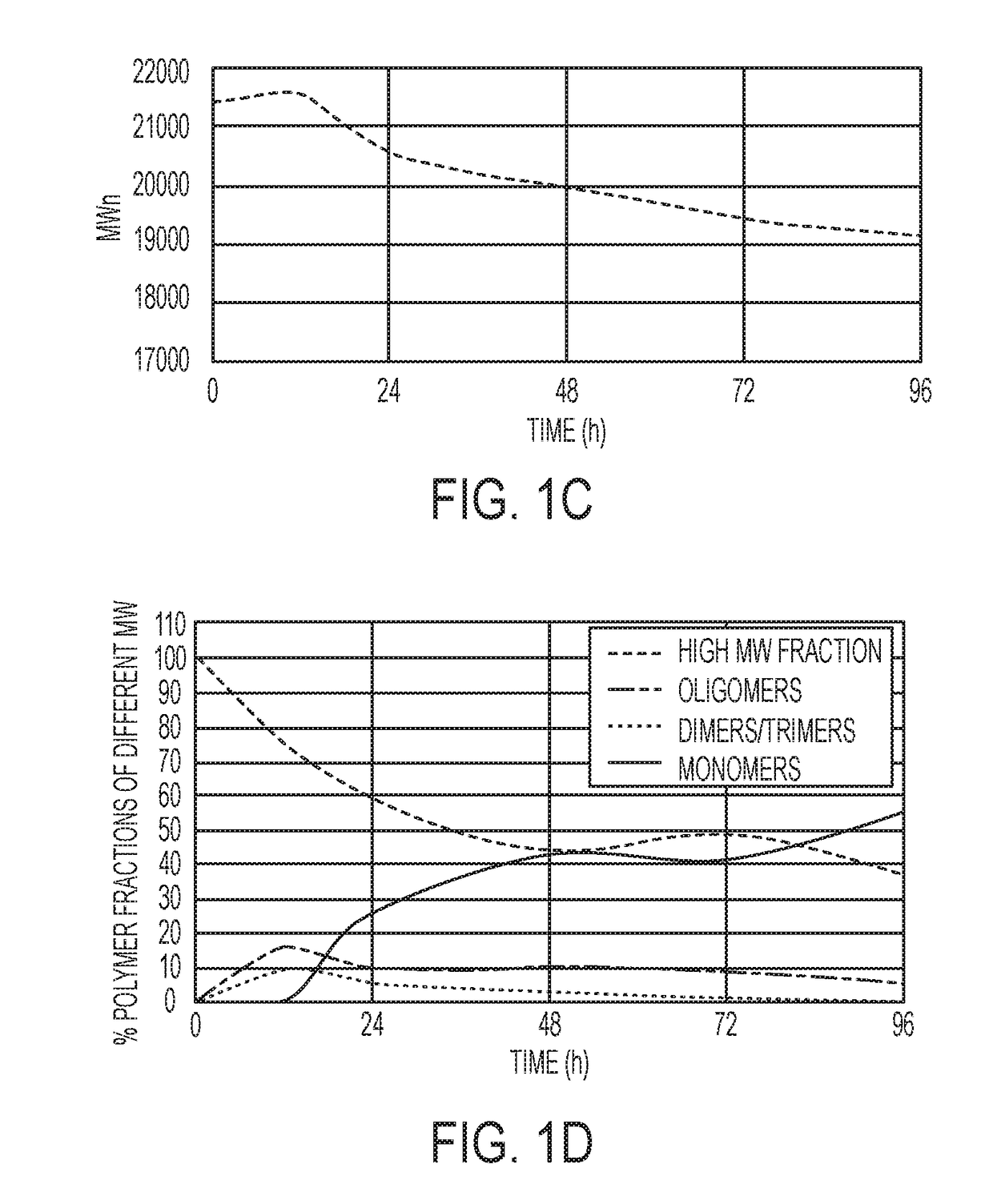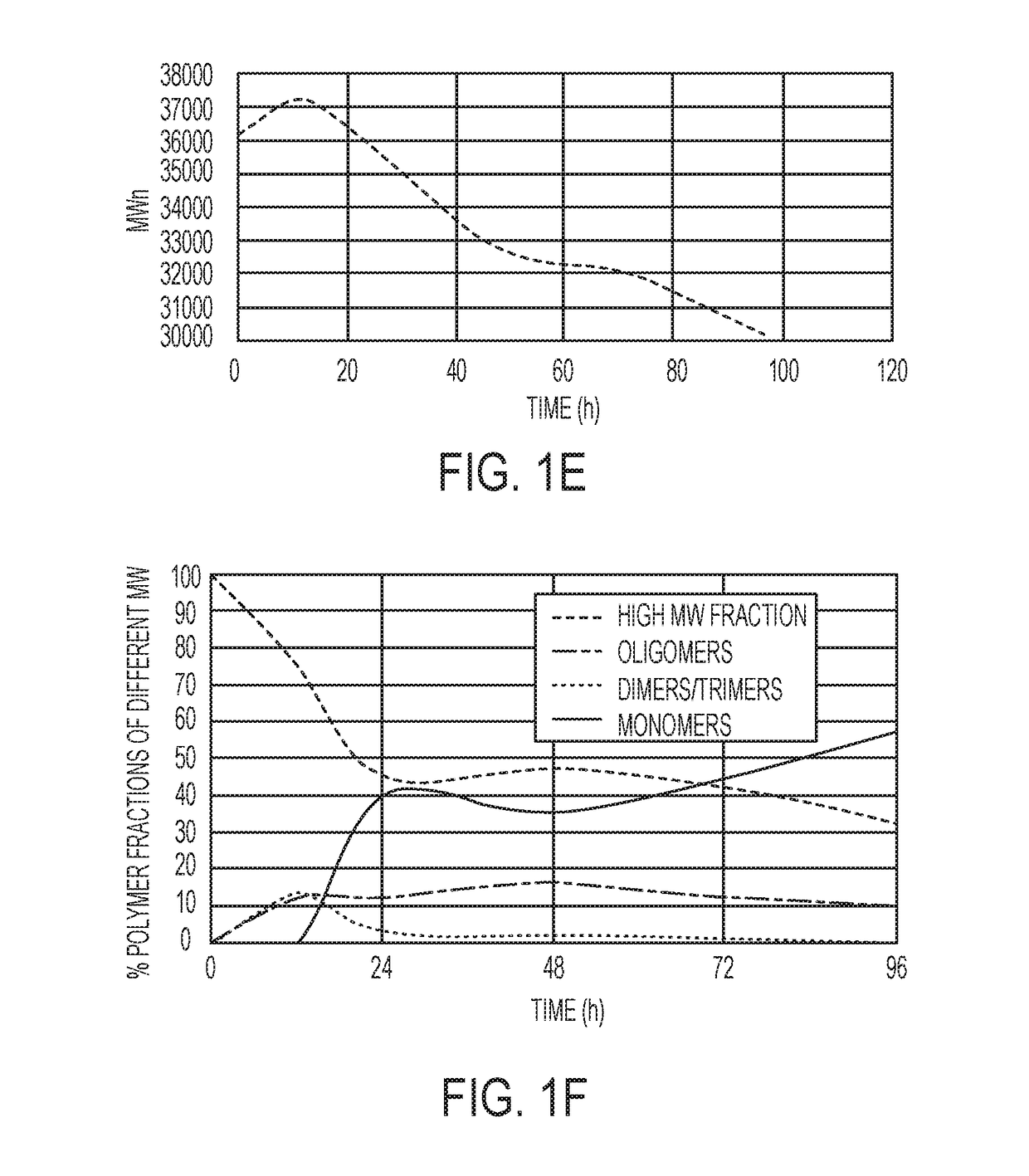Polymer systems and their applications in diagnostics and drug delivery
- Summary
- Abstract
- Description
- Claims
- Application Information
AI Technical Summary
Benefits of technology
Problems solved by technology
Method used
Image
Examples
working examples
Abbreviations
[0033]CH2Cl2 Methylene Chloride
DIEA N,N-diisoethylpropylamine
[0034]DMAB Didodecyldimethylammonium bromide
DMAP 4-Dimethylaminopyridine
DMF N,N-dimethylformamide
EDA Ethylenediamine
[0035]EDC 1-Ethyl-3-(3-dimethylaminopropyl) carbodiimide
GaL Galactose
[0036]RGD Arginylglycylaspartic acid
PVA Poly(vinyl alcohol)
TfR Transferrin receptor
TPGS D-α-Tocopheryl polyethylene glycol 1000 succinate
NS Nanosystems
[0037]P2s Precision polymers
PLGA Polylactide-co-glycolide
P2Ns Ligand functional precision polymer nanosystems
example 1
[0038]This example describes the synthesis of PLA-PEG400 block pre-polymer from 1-lactide and 7% (w / w) PEG-400.
[0039]A 250 ml three necked round-bottomed flask fitted with a reflux condenser, magnetic stirrer, heat-on-block and under a gentle purge of nitrogen, was charged with 1-Lactide (18.0 g; 0.125 mol), PEG400 (3.52 g; 2.65 ml; 0.0088 mol), Stannous Octoate (21.52 mg; 17.20 μl; 0.1% w / w), Toluene (50 ml). The reaction mixture was heated to a temperature of 115° C. while stirring to allow the solvent to reflux. The reaction was carried out under these conditions for 24 h, after which reaction mixture was cooled and solvent was evaporated under reduced pressure. The residue left upon evaporation of solvent was dissolved in 12 ml methylene chloride and precipitated in 400 ml cold diethyl ether under vigorous stirring. The white polymer was obtained by filtration under suction and dried under vacuum to a constant dry weight (16 mg).
example 2
[0040]This example describes the chain extension of the pre-polymer from example 1 with the incorporation of an aromatic linker to impart multifunctionality.
[0041]A 250 ml three necked round-bottomed flask fitted with a reflux condenser, magnetic stirrer, heat-on-block and under a gentle purge of nitrogen was charged with PLA-PEG400 (7 g; 0.6364 mmol), Pyromellitic dianhydride (166.56 mg; 0.7636 mmol), Triethylamine (128.81 mg; 177.42 μl; 1.2728 mol), Stannous Octotate (7 mg; 5.6 μl; 0.1 w / w) and Toluene (40 ml). The reaction mixture was heated to a temperature of 115° C. while stirring to allow the solvent to reflux. The reaction was carried out under these conditions for 24 h, after which reaction mixture was cooled and solvent was evaporated under reduced pressure. The residue dissolved in 10 ml methylene chloride and precipitated in 500 ml cold diethyl ether under vigorous stirring. The white polymer was collected by filtration under suction and dried under vacuum to a constant ...
PUM
| Property | Measurement | Unit |
|---|---|---|
| Fraction | aaaaa | aaaaa |
| Fraction | aaaaa | aaaaa |
| Length | aaaaa | aaaaa |
Abstract
Description
Claims
Application Information
 Login to View More
Login to View More - R&D
- Intellectual Property
- Life Sciences
- Materials
- Tech Scout
- Unparalleled Data Quality
- Higher Quality Content
- 60% Fewer Hallucinations
Browse by: Latest US Patents, China's latest patents, Technical Efficacy Thesaurus, Application Domain, Technology Topic, Popular Technical Reports.
© 2025 PatSnap. All rights reserved.Legal|Privacy policy|Modern Slavery Act Transparency Statement|Sitemap|About US| Contact US: help@patsnap.com



